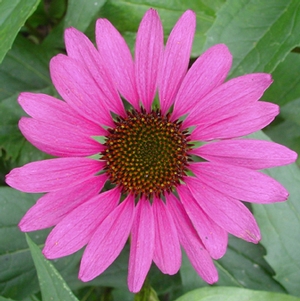Mountain ash
The mountain ash (Sorbus aucuparia) is a much-loved and widespread native tree of woodlands, moors, and mountains. As a result, it's extremely tolerant of exposed sites. It produces frothy clusters of spring flowers followed by distinctive berries that make it popular with birds. In fact, they can hardly wait for the berries to fully ripen before tucking in, so there won't be too many left for the winter. There is a choice of ornamental varieties in the Sorbus family that will provide berries in a range of colors, from ivory to white, yellow, and orange.
Bringing in birds with berries
To bring birds to your garden, plant any or many of the following shrubs with berries:
• Beautiberry (Callicarpa) • Bilberry (Vacciniurn)
• Cherry laurel (Prunus laurocerasus) • Cornelian cherry (Cornus mas)
• Cotoneaster (Cotoneaster) • Elder (Sambucus)
• Firethorn (Pyracantha) • Flowering currant (Ribes)
• Hawthorn (Crataegus) • Holly (Ilex)
• Oregon grape (Mahonia aquifolium) • Privet (Ligustrum)
• Rose (Rosa) • Sargent crabapple (Malus sargentii)
• Snowberry (Symphoriccupos) • Viburnum tinus (Viburnum)
• Alder buckthorn (Rhamnus frangula) • Barberry (Berberis)
• Bearberry (Arctostaphylos)
• Birds just love elderberries — the tiny clusters of dark berries that appear on elder shrubs after flowering.
Lovely love-lies-bleeding
Also called tassel flower, this annual plant is quite aptly named after its tiny, bright red flowers that appear in long, cascading, tassel-like clusters surrounded by green or red leaves. The grain-like seeds that follow often produce more plants, if the birds don't nibble them all first. Give this plant full sun, wind protection, and slightly below average amounts of water. Even in relatively poor soil, expect lovelies-bleeding (Amaranthus caudatus) to grow from 1 to 1.5 meters high, and to provide a long-lasting sea of dangling red strands from summer to autumn.
Pretty purple cone flower
Place this daisy-like perennial plant among your taller sunflowers for an eye-catching flower border. Purple coneflowers (Echinacea putpurea) will reach from 1 to 1.5 meters tall. They'll expand in diameter from 75 centimeters to 1.5 meters, so be sure to leave enough room between plants when planting. Purple coneflowers bloom from July to September, and there are reddish-purple as well as white varieties. The name derives from the conical purple or brown centre. This plant is drought and wind tolerant.
You can send flowers to Gurgaon with best quality flower delivery gurgaon. You can visit this flower guide for more information about this article.




